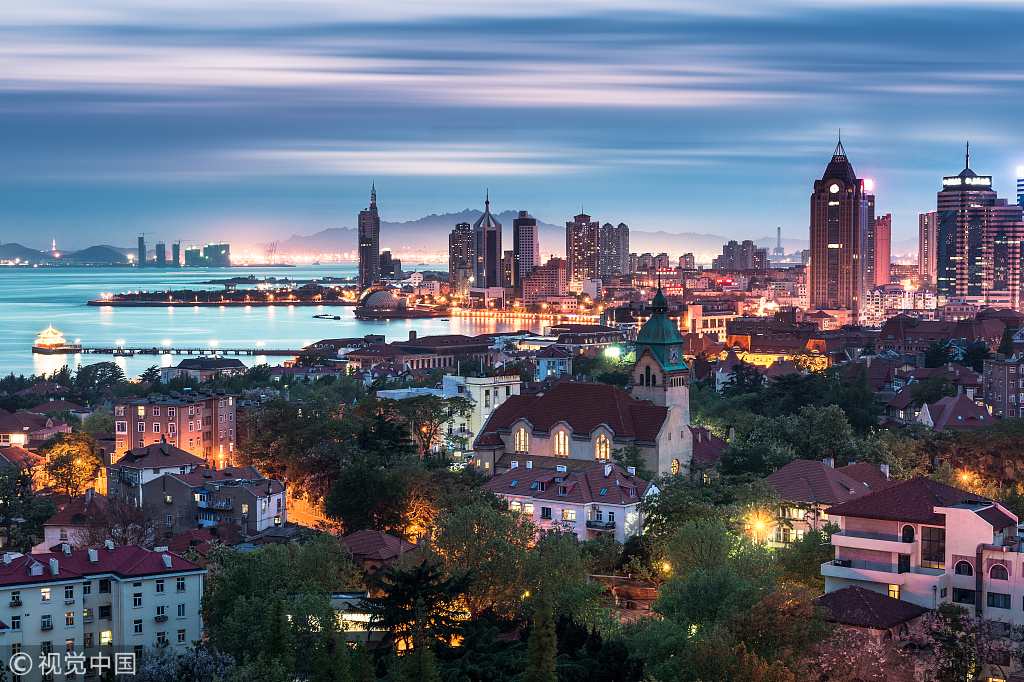
Travel
15:03, 04-Mar-2019
China sees glittering tourism prospects
CGTN

As China works to realize its immense potential as a global tourism destination, more cities have introduced visa-free transit services to make visits easier.
On January 1, five more cities began offering 144-hour visa-free services to travelers from 53 countries - Qingdao, Shandong Province; Xiamen, Fujian Province; Wuhan, Hubei Province; Chengdu, Sichuan Province; and Kunming, Yunnan Province.
China, the largest outbound market and the top spender in international tourism, ranks fourth on the World Tourism Organization's list of most-visited countries, with the number of international tourists exceeding 60.7 million in 2017. France topped the list with 86.9 million.

Night view of Qingdao City, east China's Shandong Province. /VCG Photo
Night view of Qingdao City, east China's Shandong Province. /VCG Photo
China's foreign exchange revenue was 123.4 billion U.S. dollars in 2017, with spending by foreign tourists reaching 69.5 billion U.S. dollars, according to the now disbanded China National Tourism Administration.
The country is expected to become the top destination globally by 2030, according to a report in November by market research provider Euromonitor.
The World Travel and Tourism Council has forecast that China will be the largest travel and tourism economy by 2028, attracting more than 100 million overseas visitors.
Early last year, China proposed promoting "all-for-one" tourism and gradually develop into a world tourism power by 2040, according to Xinhua News Agency, citing the CNTA.

An aerial view of Dalian City, northeast China's Liaoning Province. /VCG Photo
An aerial view of Dalian City, northeast China's Liaoning Province. /VCG Photo
In April last year, the duties of the CNTA and the Ministry of Culture were merged into the new Ministry of Culture and Tourism.
In 2017, Chinese tourists made more than 130 million outbound trips and spent 258 billion U.S. dollars on international travel, according to the World Tourism Organization.
In the first half of last year, the number of outbound tourists exceeded 71 million, a year-on-year rise of 15 percent, according to the China Tourism Academy, a Beijing research institution affiliated to the Ministry of Culture and Tourism. In the same period, however, visits to the Chinese mainland dropped slightly, by about 0.4 percent.

View of old town in central China's Hunan Province. /VCG Photo
View of old town in central China's Hunan Province. /VCG Photo
Xiao Honggen, associate professor at the School of Hotel and Tourism Management at Hong Kong Polytechnic University, said, "The development of China's inbound tourism can be traced to the late 1970s ... yet in the new era, developing inbound tourism is not as high a priority for top administrators as the quality of life and well-being." On the other hand, competition with the world's other leading tourism destinations has been intense, Xiao said.
China has 53 World Heritage sites, the most in Asia and second only to Italy globally. However, it ranked 15th in the World Economic Forum's global tourism competitiveness rankings in 2017.
"We now tend to focus a lot more on tourism, but it is mainly on domestic tourism," said Xiao, who is also a member of the CTA's academic committee. Chinese tourists made 5 billion domestic trips in 2017, generating revenue of 4.57 trillion yuan (667 billion U.S. dollars), according to the CNTA.
(Cover: Tourists take photos. /VCG Photo)
Source(s): China Daily

SITEMAP
Copyright © 2018 CGTN. Beijing ICP prepared NO.16065310-3
Copyright © 2018 CGTN. Beijing ICP prepared NO.16065310-3